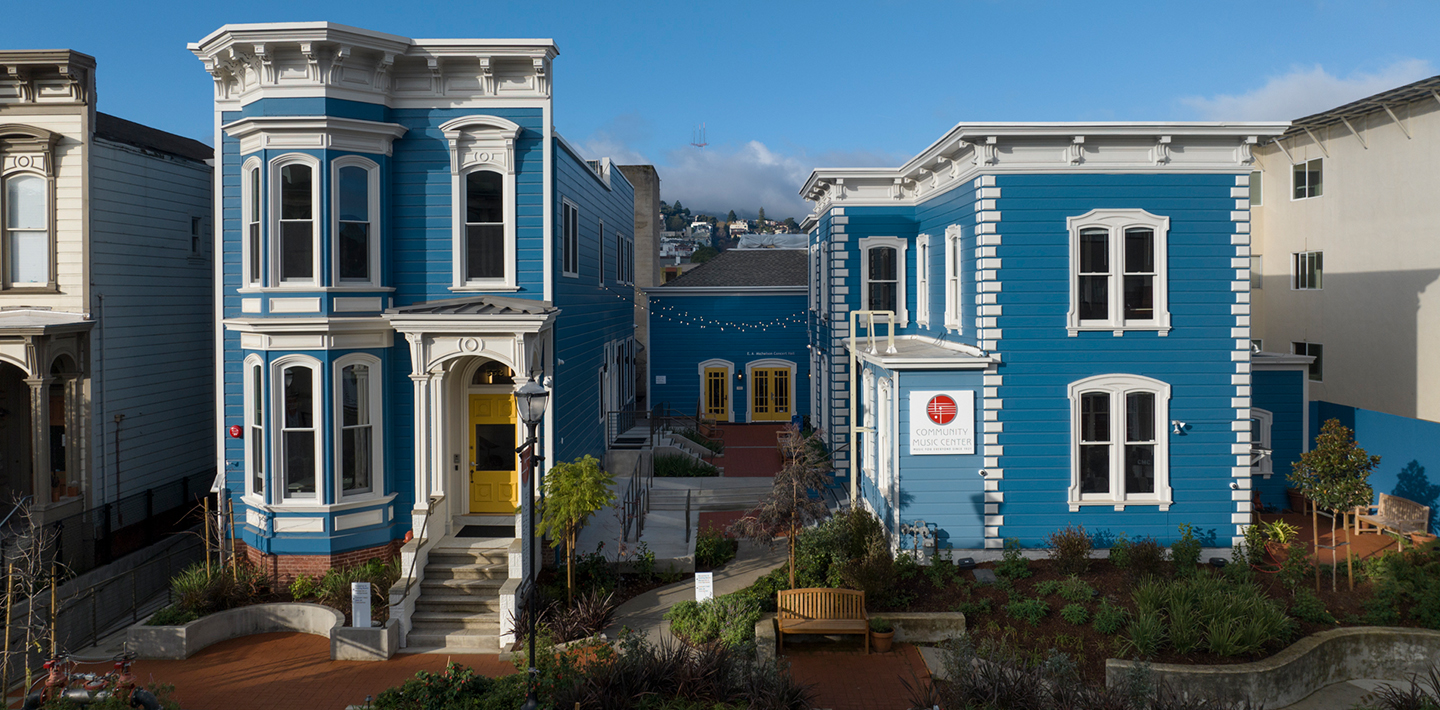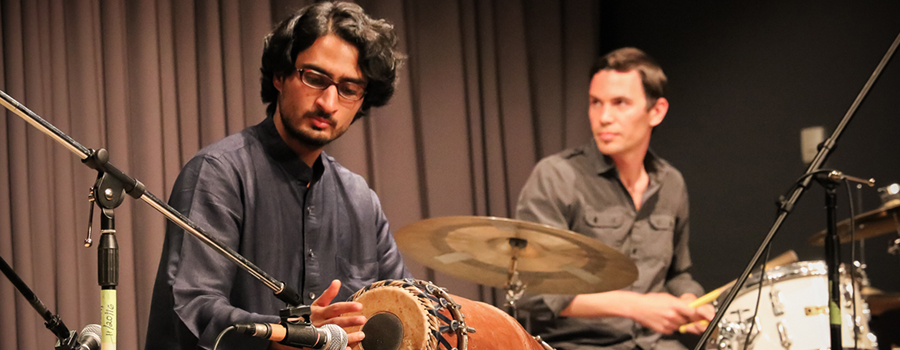Photo by Julie Sparenberg
On the heels of a six-city concert tour of India, internationally acclaimed instructor Dr. Rohan Krishnamurthy is back in San Francisco to teach an Indian Rhythm Ensemble class at Community Music Center. This no experience necessary ensemble is open to all ages and explores a variety of traditional Indian percussion instruments as well as an exciting form of Indian vocal percussion (konnakol) similar to beatboxing. In the ensemble, participants learn universal techniques and approaches to Indian rhythm with a focus on the ancient South Indian Carnatic tradition.
How was the tour?
Rohan: It was a great experience touring all over India most of September in The Park’s New Festival. I toured with a wonderful singer (Roopa Mahadevan), violinist (Anjna Swaminathan), and pianist (Guy Mintus) friends of mine, playing cross-genre repertoire, drawing on the Indian Classical tradition along with jazz, soul, and spoken word. The pieces we played were newly composed or arranged exploring how the quartet could interpret sounds in a cross-genre framework. During the tour, I performed on a hybrid kit that I’ve been developing that explores the boundaries between hand drumming and stick drumming on drum set.
How did you conceive of the Indian Rhythm Ensemble at CMC?
Rohan: I have had this idea since I moved to San Francisco in 2013. I wanted to create an artistic and cultural offering to San Francisco–something accessible to all people in the city. I wanted to bring in people of different ages, backgrounds, and musical levels to explore the universal language of rhythm. I was aware of Community Music Center’s devotion to making music accessible to all people. I love this idea of access and thought that CMC would be a fitting place to create this rhythm class.
I received a San Francisco Arts Commission grant to compose a piece about San Francisco’s rhythmscapes and to start this new class. Thanks to the San Francisco Arts Commission we were able to buy really wonderful traditional Indian instruments for the ensemble, and I premiered the work in progress 7X7 last April 2017.
Tell me about the ensemble?
Rohan: The rhythm ensemble is open to all ages, backgrounds, and levels. You don’t have to be a drummer. You don’t need a musical background. The ensemble explores rhythm as a universal process. It’s not genre specific. We use simple exercises to clap and speak the rhythms. It’s a very accessible and natural way of engaging in learning rhythm. These type of exercises are foundational in Indian rhythm studies. One unique thing about this ensemble is CMC has a full set of traditional Indian drums, thanks to the grant. There are very few places either colleges or music schools that have a collection like this one.
What are your hopes and aspirations for the ensemble?
Rohan: I try my best to not predict the future but, I’d love to see the ensemble become a nexus for all types of people (musicians and non-musicians alike), to connect and explore different concepts of rhythm. Rhythm is a unifying concept. It’s the thing that ties music together as well as many of life’s processes. I see the ensemble as a place for understanding and experientially exploring rhythm. I hope it benefits and brings together many types of people in our community. I’d love to see the students apply the concepts in creative ways that are meaningful to them.



